Selected by the Festival du Nouveau Cinéma (FNC) in 2019, PLAYTIME is a student project produced by Catherine Bazinet, Maxime Boisvert, Ronan Le Gall, Alexis Maher and Charles Tétreault as the final project of the course Immersive environments and interactivity at the Université du Québec à Montréal (UQAM). The experience, which was presented from October 11 to 20, 2019 as part of the FNC Explore selection, was also awarded the prize for emerging students, presented by Zú.
PLAYTIME transports us to worlds from the imagination of children. When the child travels to another world, the walls no longer exist, objects come to life and endless colors appear in the eyes of those who dare to imagine.
In PLAYTIME, two participants take part in a play session that highlights the characteristic imagination of children. However, the experience is asymmetric. While one person wears an HTC VIVE headset that immerses them in the universe of a child, the other person remains anchored in the real world and participates in the experience by manipulating a kind of magic wand (a VIVE Tracker attached to a monopod). Like an imaginary friend, this second person interacts with the child in a disembodied way. The individual wearing the helmet does not see the other person, but rather discovers small actions magically created in the universe, not knowing that they are in fact coming from the other person.
The experience is fun. The goal is not to win, but rather to explore.
Maxime Boisvert
Throughout the work, participants can walk or crawl on the foam mat that delimits the play space. Rather than using teleportation to get around, the person wearing the helmet can go to the small tent placed in front of them and thus be transported to different imaginary worlds. As Maxime Boisvert explains, “the theme of childhood allowed us to seek out common cultural elements for everyone”. Although the project was not created for children, he clarifies, “the intention of the whole project was to bring people back to childhood.”
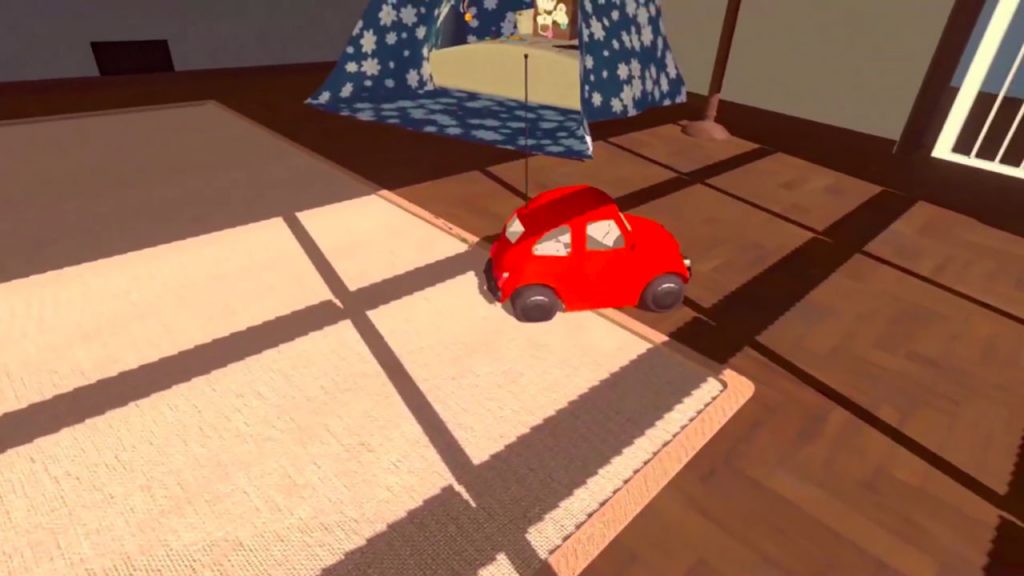
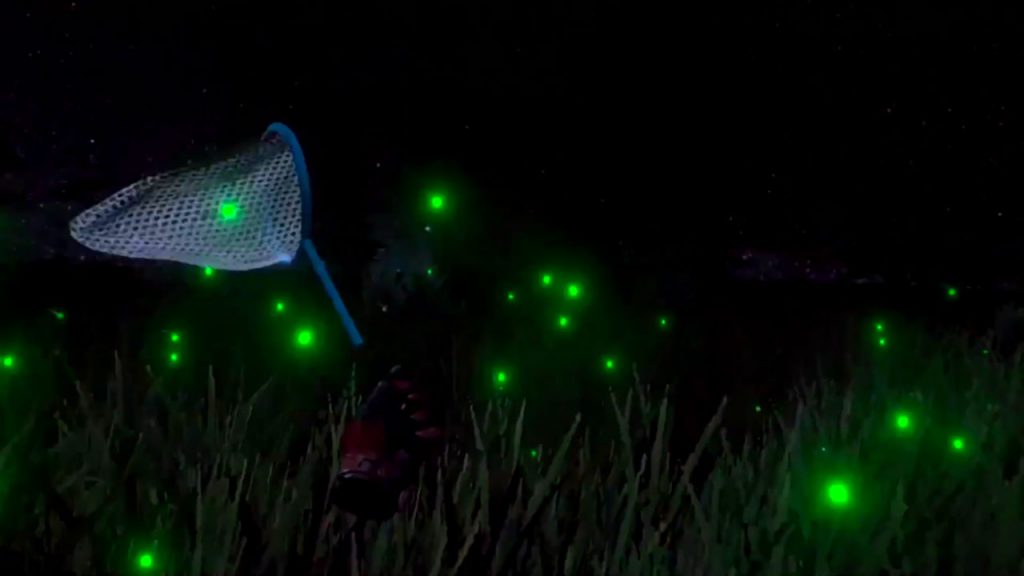
Even if it evokes the theme “play”, PLAYTIME has no specific objectives, no written rules or duration. Some people can spend 20 minutes there, while others will only take 5. Everyone can take ownership of the experience and explore the different fantastic worlds at their leisure.
Child’s play
The theme of childhood, however, is not what started the project. Rather, it was from a course requirement and a particular technical device that the idea came to the team. PLAYTIME was actually created as the final project of the course Immersive environments and interactivity, given at UQAM as part of the Bachelor of Communication, interactive media profile. To put the creation of PLAYTIME in context, Catherine Bazinet explains the structure of the course in question: “A first assignment asked us to work on immersion without using virtual reality. Then our final project was to make the virtual reality headset our own. “
By having to think of immersion beyond virtual reality helmets – in this case, by creating a first dome project – the team opened up to different ways of bringing the public to inhabit a space: “We knew from the start that we wanted to work with a larger dimension, because we are used to working with people, we are used to bringing people together, making them connect. We had the idea of bringing people together despite the fact that the virtual reality headset can isolate us, “she adds.
Having free choice of material for their final project, Catherine Bazinet admits that the decision to use the HTC VIVE system was made naturally, specifically because of the possibility of adding a Tracker: “the choice to use a Tracker is a strength of project” she opines. Using this Tracker, the team looked for what could be done. Maxime Boisvert explains that several options were tested, such as that of placing the Tracker on a cap (to evoke the look of a propeller beanie). [PB1] Ultimately, the solution chosen was to attach the Tracker to the end of a rod that could be manipulated by the person not wearing the helmet.
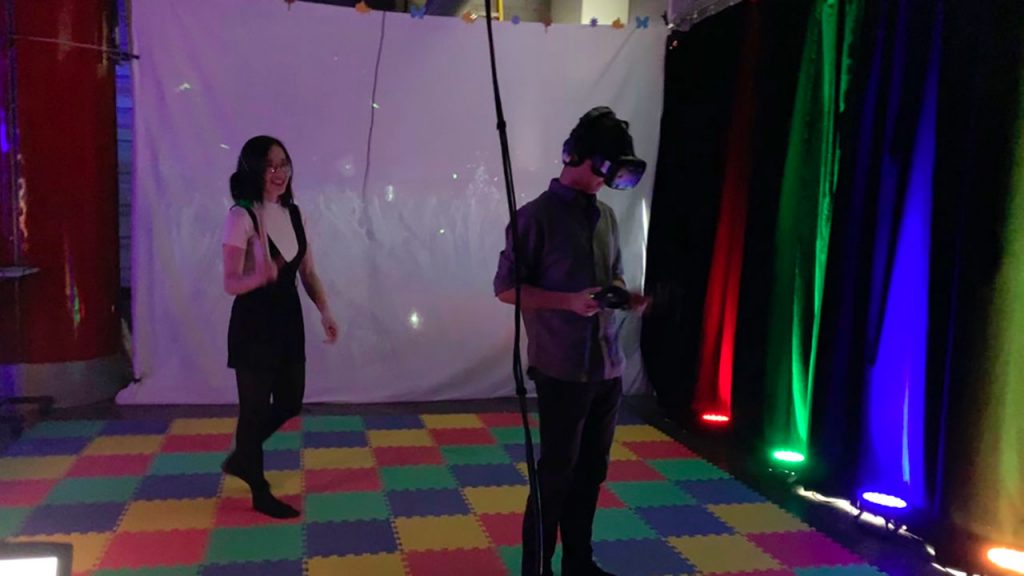
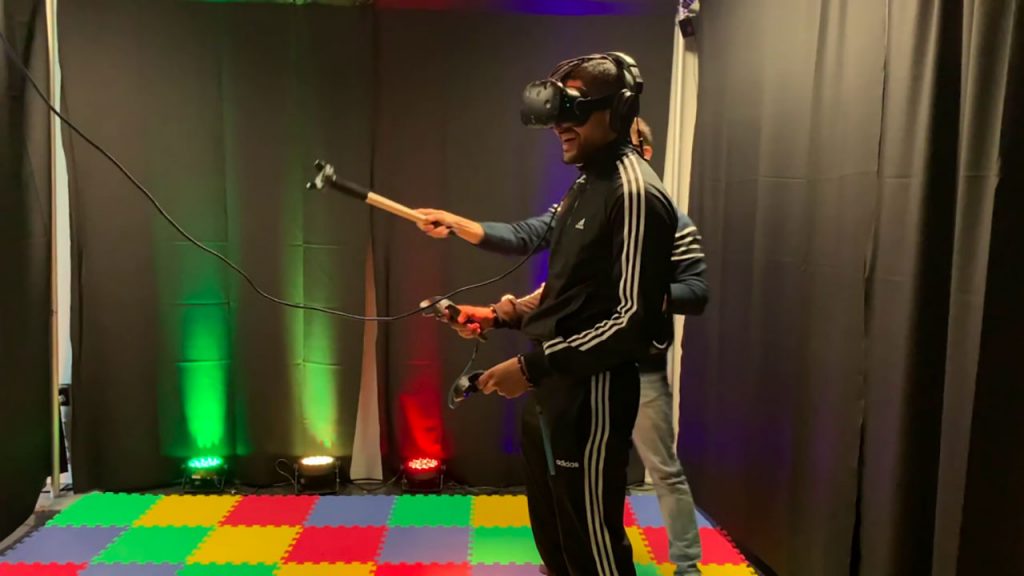
This is what made it possible to create a work for two people who manages to open up, a little bit, the experience of virtual reality. “The person [who represents the imaginary friend] could, through their movements, interact with the person with the helmet. Either to accentuate or help the person’s experience with the helmet, “explains Catherine Bazinet.
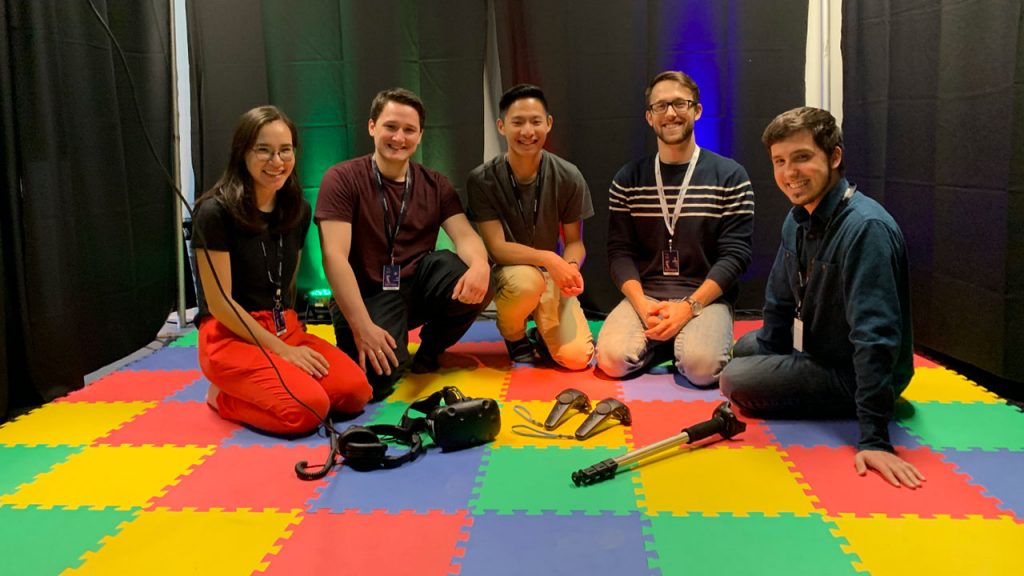
A game for everyone
The team also insists on the accessibility objective of their work. To this end, Catherine Bazinet explains: “We wanted to destroy everything that was not natural in virtual reality. We wanted to prevent people from feeling uncomfortable. ” One of the important factors to consider was how to get around. “We really didn’t want to use teleportation,” explains Catherine Bazinet. “We challenged ourselves and that’s how we came up with the idea for the tent.”
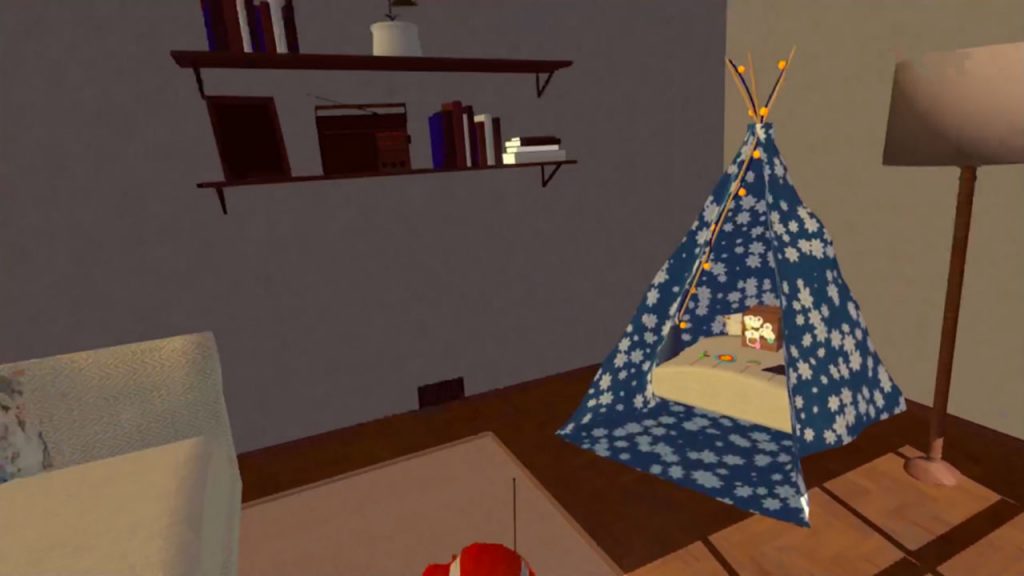
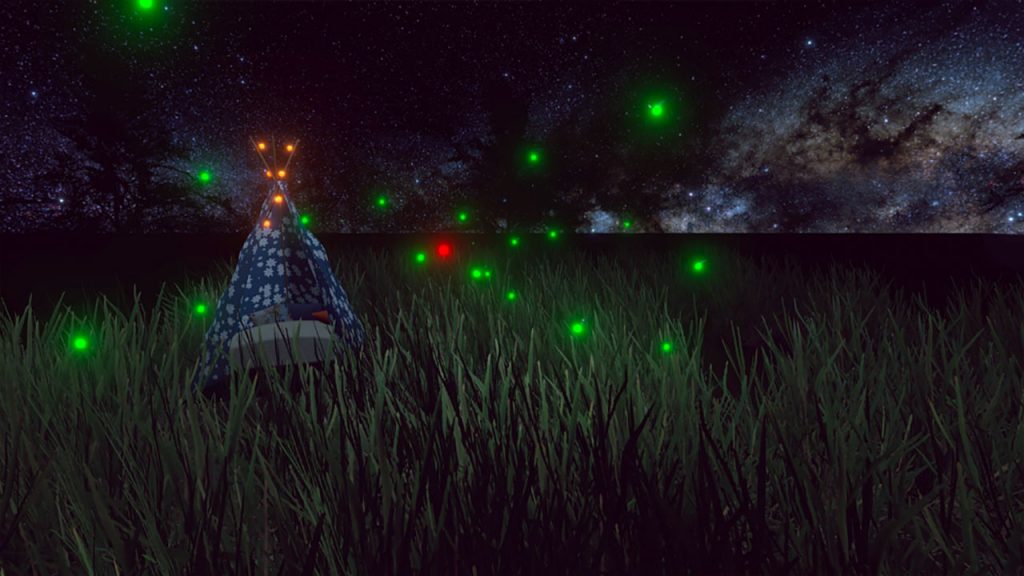
To avoid causing nausea through the modes of movement usually used by virtual reality, the team opted instead for physical movements in the small play area designated by the foam mats. The carpets therefore serve a dual function. In addition to delimiting the playing area, they also make it possible to bridge the physical and virtual environments: you feel anchored in a world like in the other. It is simply by going to the small tent and choosing one of the magic wands that is there that one is transported to one of the different imaginary worlds.
We wanted to destroy everything that was not natural in virtual reality.
Catherine Bazinet
By testing this solution themselves, the team members were able to confirm that this way of moving did not cause nausea, even in Catherine Bazinet who admits to being very sensitive to this kind of discomfort. By explaining their creative process to us, she underlines the usefulness of having been able to work in a group and how this facilitated iterative changes during prototyping: “We got used to having a helmet and taking turns working and really exchanging, ”she mentions,“ and even having someone else’s help (a person in the headset telling us what is to be changed and the other person is at the computer making the changes). This feedback loop (prototyping, testing, iteration, and so on) was all the more beneficial as each member of the team could contribute their expertise (modeling, artistic direction, etc.). Ultimately, this team dynamic allowed them to work quickly and complete the project in just over a month.
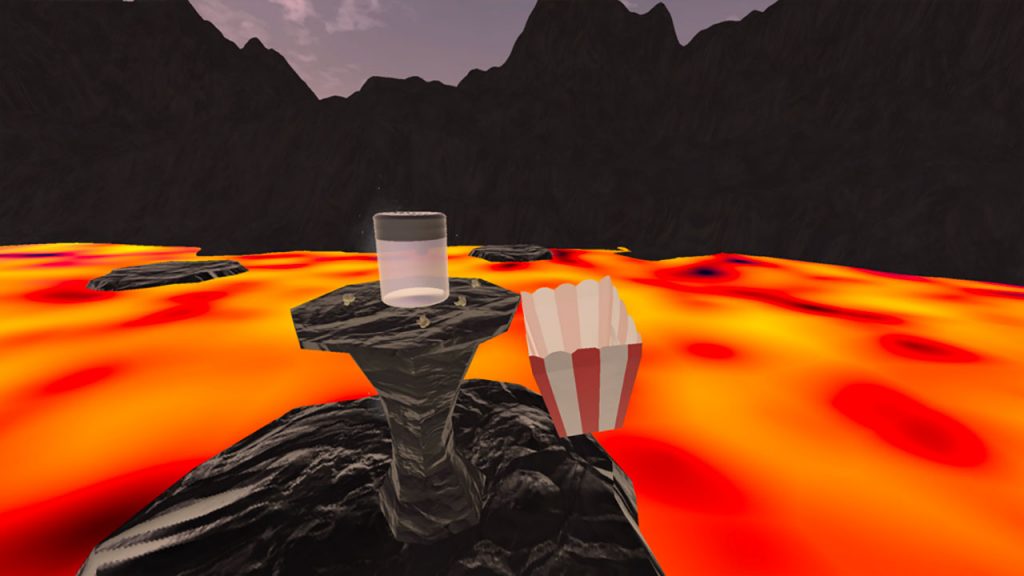
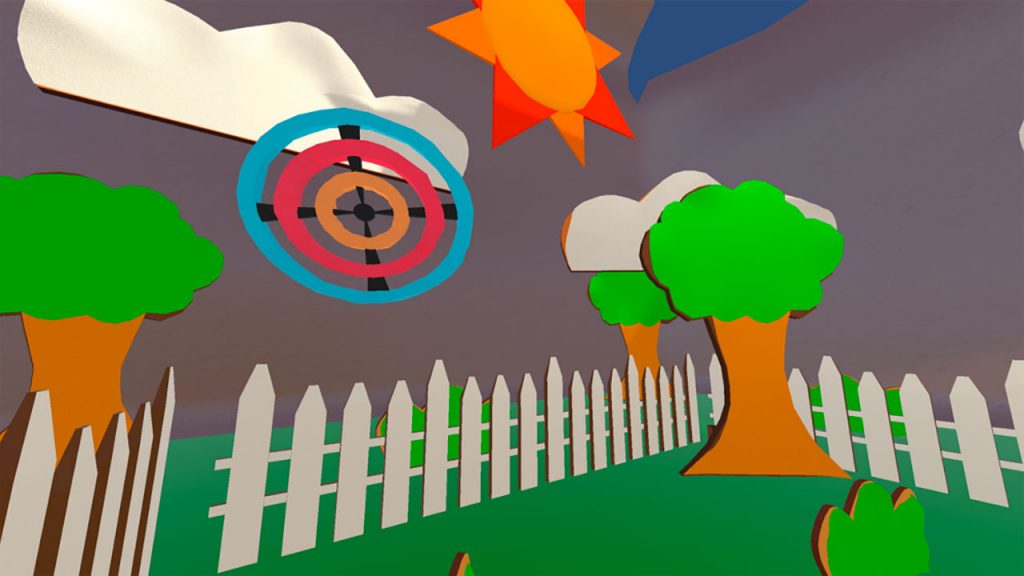
The experiment was also tested with family members of all ages to validate ease of use. “It’s fun to have had people in the team who had different sensibilities, different approaches”, explains Maxime Boisvert, “but as soon as the project ended I had my family try the project to have their impression: “Is it easy for you?” Doing the test after production brings us ideas for the next projects. We take notes on how people interact. “As an example of this adaptation work which comes from testing with people of different levels of familiarity, Maxime Boisvert recounts the moment, during the exhibition, when they gave PLAYTIME to one of their grandmothers. Despite her limited mobility, she was able to appreciate the experience with a little help from the team.
It was something that we had carefully assessed during production, to make the project accessible to everyone. We were happy the day of the presentation to be able to do it, to have done enough tests, to have kept an open mind on all the characteristics of our audience to be able to present it and that it would be pleasant for everyone.
Maxime Boisvert
During its presentation at the Festival du Nouveau Cinéma (FNC) in autumn 2019, around 100 participants aged 7 to 77 were able to try PLAYTIME. Even though the artwork is open to people of all ages and all levels of familiarity with virtual reality, the team behind PLAYTIME believes that the experience is far more enjoyable when experienced by people who know each other already. “People are still shy,” Catherine Bazinet explained to us: “Virtual reality headsets are still unnatural for most people. It is easier to appropriate the medium through play. As soon as the two people knew each other[PB1] , the dialogue was much more open, people had more fun playing, entering the game rather than trying to “Do the right thing”.
After FNC
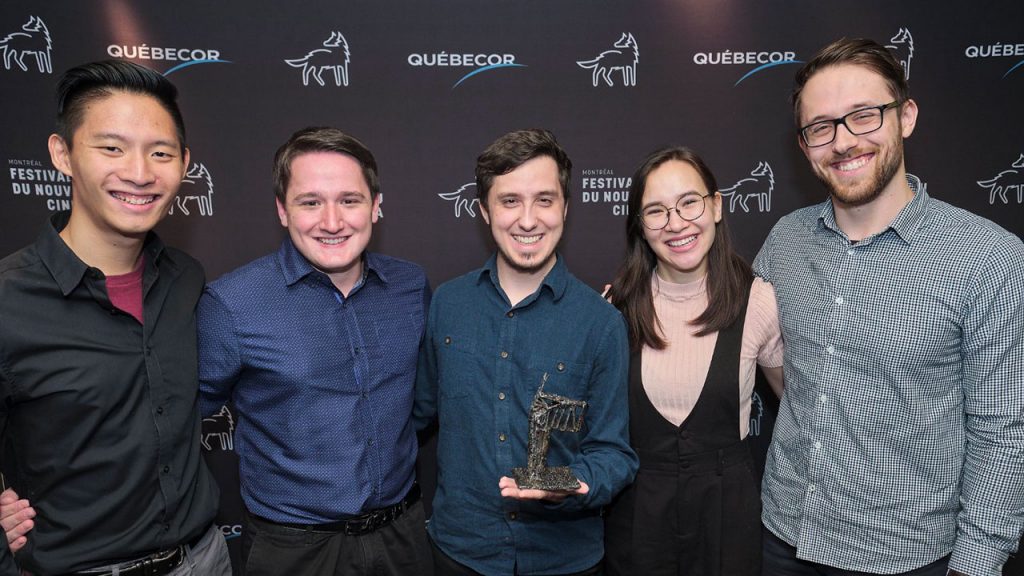
In the end, PLAYTIME was awarded the FNC Next Generation Student Award. This recognition is all the more precious in that it will have opened doors for the team. This allowed them, for example, to present the project on November 19, 2019 to the audience of HUB Montreal (November 18–21, 2019) as part of a panel entitled “New conquerors“.
“We were invited with UQAM to go and present our project and explain how we developed it based on the tools we acquired at school[PB1] , how we were able to go and present it at FNC, how we were able to export the project to an exhibition “told Maxime Boisvert:” We focused a lot on the challenges and opportunities that [the project] brought us, for example the Tracker. It’s a challenge: how can we optimize it better, how can we better use it in an original way that meets a challenge.”
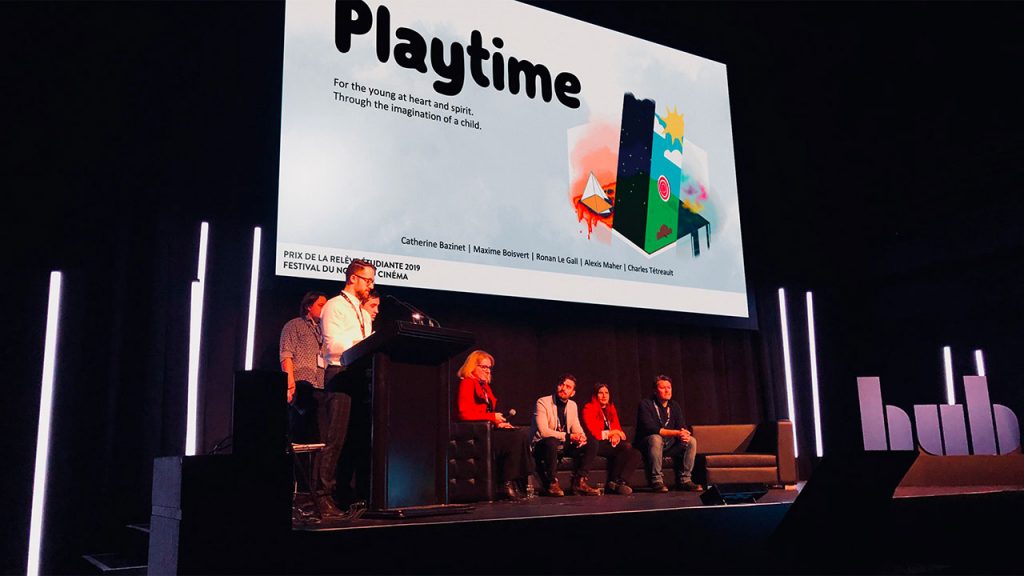
From the FNC and HUB Montreal, the team members were able to continue their personal projects while continuing their studies. During Montréal en Lumière, for example, they were able to present two projects on the Place des Festivals in the Quartier des Spectacles. As part of a collaboration between the Quartier des spectacles Partnership, the Festival Montréal en Lumière, Moment Factory and Montréal Joue, UQAM students were called upon to conceptualize and produce light-based interactive works. Two of the projects of the team behind PLAYTIME were selected and presented from February 20 to March 1, 2020. These are NOTICIA (Alexis Maher, Charles Tétreault and Catherine Bazinet) and DI [REC] T (Maxime Boisvert and Ronan Le Gall ). Find the two projects on http://projetfauxsemblant.com.
Finally, while still finishing their study program and internships, the members of the PLAYTIME team embark on an exciting new project: their own studio. Keep a close eye on this rising team.
Interview by Philippe Bédard and Marine Leparc for Quebec / Canada XR.
In partnership with Québec/Canada XR (link) – The original article can be found here in french (link).
- First episode: SWAMPSCAPES by Elizabeth Miller, Kim Grinfeder, Juan Carlos Zaldivar
- Second episode: AFTERLIFE, by Signal Space Lab
- Third episode: SPACE EXPLORERS: THE ISS EXPERIENCE, by Félix & Paul Studios
- Fourth episode: CONTINUANCE, by Stratéolab
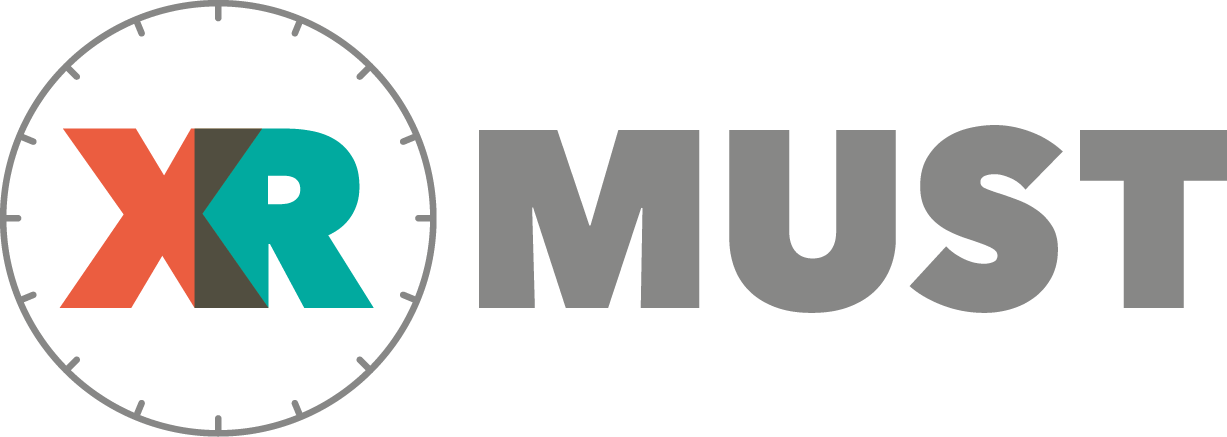
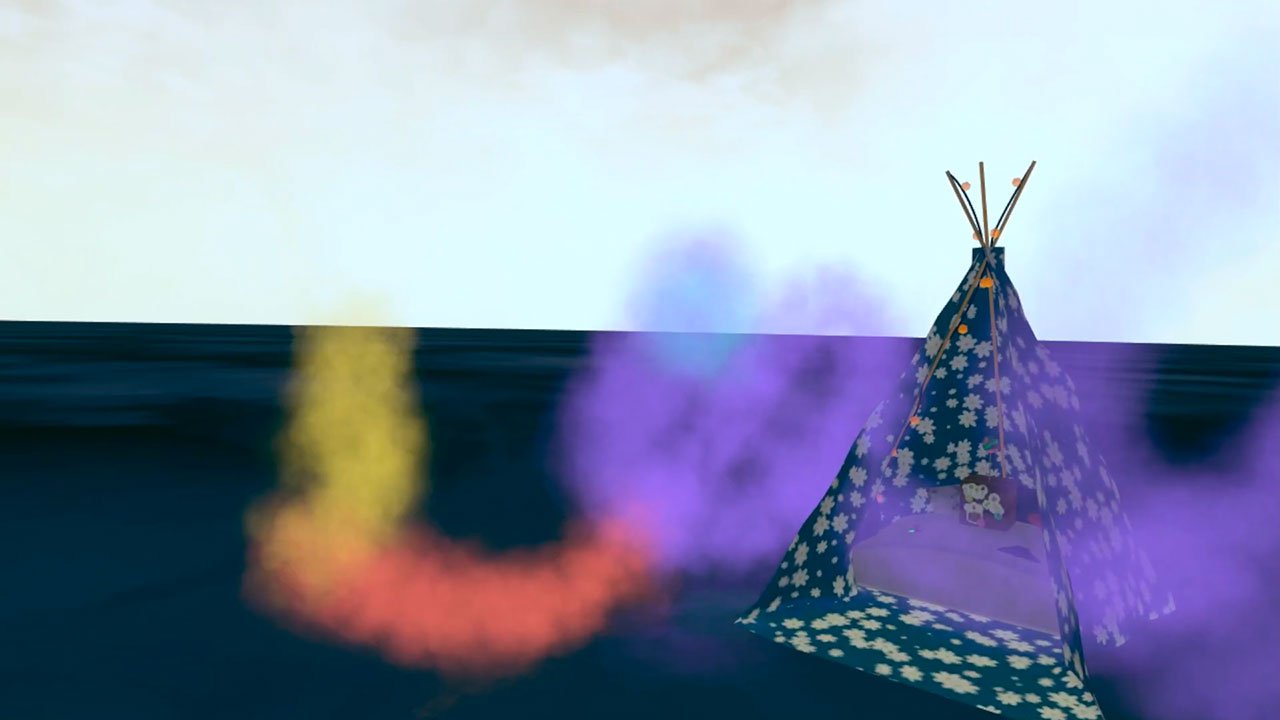

Leave a Reply
You must be logged in to post a comment.